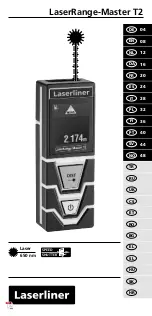
Editing MIDI parameters
E-60/E-50 Music Workstation
r
189
Editing MIDI parameters
Let us briefly explain where to look for the part you
want to edit (use PAGE
[ø][˚]
to select it):
Note: Always
select the part you want to edit
before
changing
the available parameters.
Keyboard, Style, Song parts
The Keyboard, Style and Song parts have the same “TX”
(transmission) and “RX” (reception) parameters, so we
will discuss them only once, except where there are sig-
nificant differences.
Note:
Press the
[INIT¥SINGLE¥VALUE]
field to recall the default
setting for the parameter that is currently selected (whose display
field “lights”).
These two button icons allow you to specify whether
(lights) or not (dark) the part whose name appears in
the upper left corner should transmit (TX) or receive
(RX) MIDI data.
■
CHANNEL (1~16)
Allows you to assign a MIDI transmit channel to the
selected part. Unless you have a very good reason to
do otherwise, we suggest using the same TX and RX
channel numbers for a part.
Note:
Assigning the same channel to two or more parts is usu-
ally not a very good idea.
■
LOCAL
This is where you can disconnect the part from the
internal sound source (“OFF”) – or re-establish that
connection (“ON”). You can also change the LOCAL
setting of all parts simultaneously using MODE
[Local¥On]
/
[Local¥Off]
on the first MIDI page.
■
SHIFT (–48~48)
This parameter allows you to transpose the note
messages before they are transmitted to an external
MIDI instrument or computer. The maximum possible
transposition is four octaves up (48) or down (–48).
Each step represents a semi-tone.
The TX section provides a number of filters that allow
you to specify whether the messages in question
should be transmitted (ON) or not (OFF).
Press the
[TX¥EVENT]
field to open the following
pop-up window:
Press the
[ALL]
field to switch all button icons on (the
corresponding messages are then transmitted). Press
[NONE]
to switch all button icons off. Press
[CLOSE]
to return to the page where you came from. You can
also switch the following button icons on/off individ-
ually:
●
PROGRAM CHANGE—
Program change and bank select
(CC00, CC32) messages. These messages are used to select
sounds and Drum Sets (as well as User Programs, see
below). “Bank Select” messages are control change mes-
sages, which were added when it became clear that the
number of sounds that can be selected using program
change messages (128) was no longer sufficient to access
all sounds of a given instrument. (The E-60/E-50 boasts
over 1590 sounds.)
●
PITCH BENDER—
Pitch Bend messages.
●
MODUL—
Modulation messages (CC01).
●
VOLUME—
Volume messages (CC07).
●
PANPOT—
Pan(pot) messages (CC10).
●
EXPRESSION—
Expression messages (CC11).
●
HOLDº—
Hold (Sustain, Damper) messages (CC64).
●
SOSTENUTOº—
Sostenuto messages (CC66).
●
SOFTº—
Soft messages (CC67).
●
REVERB—
Reverb Send messages (CC91).
●
CHORUS—
Chorus Send messages (CC93).
●
RPNº—
Registered parameter number (CC100/101).
●
NRPNº—
Non-registered parameter number (CC98/99).
●
SysExº—
SysEx messages (system exclusive).
●
CC16º—
General purpose controller that allows you to
influence the “C1” parameter (see p. 79).
Note:
TX EVENT parameters with a “º” symbol are not available
for Style parts.
KEYBOARD
UP1, 2
LWR
MBS
MELODY INT
STYLE
ADrums
ABass
Accomp1
Accomp2
Accomp3
Accomp4
Accomp5
Accomp6
SONG
Part1~16
SYSTEM
Sync
Basic Channel
Style Channel
NTA
V-LINK
Param
TX ON, RX ON
MIDI TX
TX EVENT
E-60_50_OM_UK.book Page 189 Thursday, June 22, 2006 10:06 AM
















































